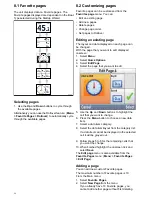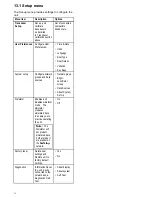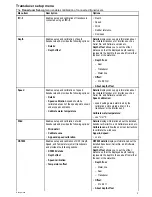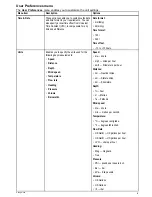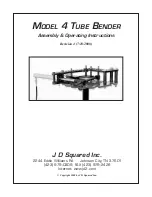
12.1 Alarms
Alarms are used to alert you to a situation or hazard
requiring your attention.
Some examples of alarms are:
• Anchor alarm — Used when anchored, this alerts
you to a change in depth which could mean that
the chain length requires adjusting.
• Depth and speed alarms — These alarms alert
you when your depth or speed moves outside of
specified limits, for example a minimum depth.
• MOB (Man Overboard) alarm — Received from an
MOB system.
When an alarm occurs, a message is displayed and
an audible alarm may sound.
You can either:
• Silence the alarm, or
• Silence the alarm and edit the alarm settings.
Note:
With the exception of the Alarm clock,
Speed and Sea temperature; SeaTalk systems will
only be able to switch alarms on and off, SeaTalk
ng
systems will also be able to adjust settings.
Man over Board (MoB) alarm
In the event of a MOB alarm, the instrument provides
details to help find the MoB target.
• Brg: Bearing to MoB waypoint.
• Rng: Range to MoB waypoint.
• Elapsed time since start of MoB alarm.
Bearing and Range require GPS data to be available
on the network.
Alarm settings
Most alarms are generated locally using specified
thresholds. They are also transmitted to the
SeaTalk and SeaTalk
ng
networks for display at other
compatible devices.
Category
Alarm
Content
Alarm
• On
• Off (de-
fault)
Depth
Shallow
Adjust
• 0 — xxx
FT
• 5
ft (default)
Alarm
• On
• Off (de-
fault)
Depth
Deep
Adjust
• 0 — xxx
FT
• 100
ft (default)
Alarm
• On
• Off (de-
fault)
Depth
Shallow
Anchor
Adjust
• 0 — xxx
FT
• 5
ft (default)
Alarm
• On
• Off (de-
fault)
Depth
Deep
Anchor
Adjust
• 0 — xxx
FT
• 100
ft (default)
Alarm
• On
• Off (de-
fault)
Speed
Boat Speed
High
Adjust
• 0 — 100
KTS
• 30 kts (de-
fault)
Alarm
• On
• Off (de-
fault)
Speed
Boat Speed
Low
Adjust
• 0 — 100
KTS
• 5 kts (de-
fault)
72




